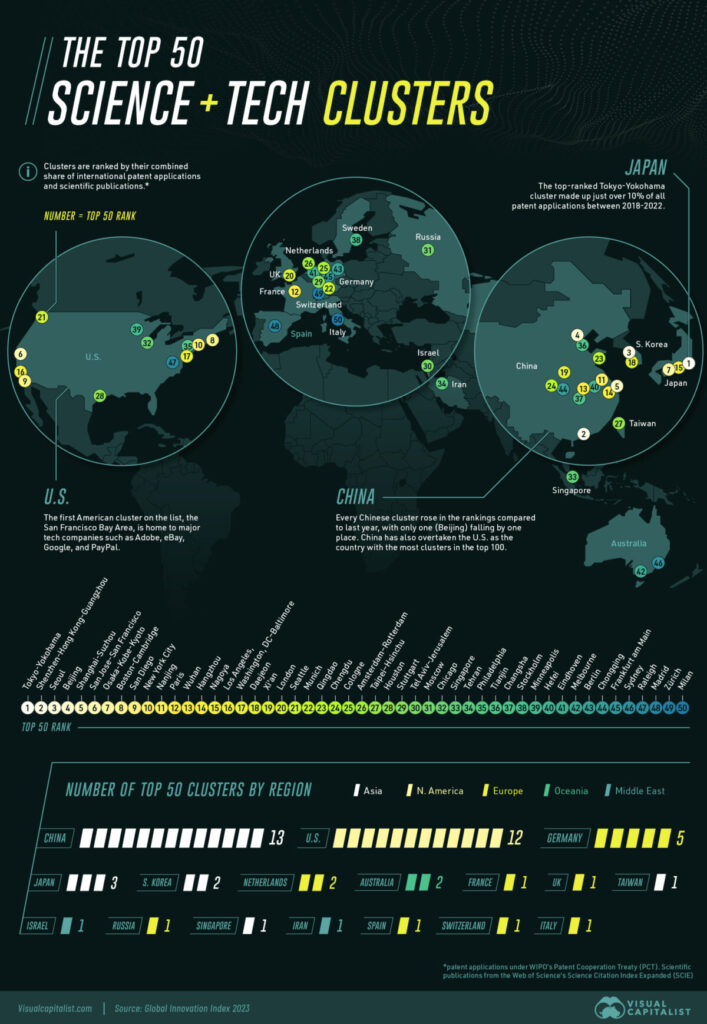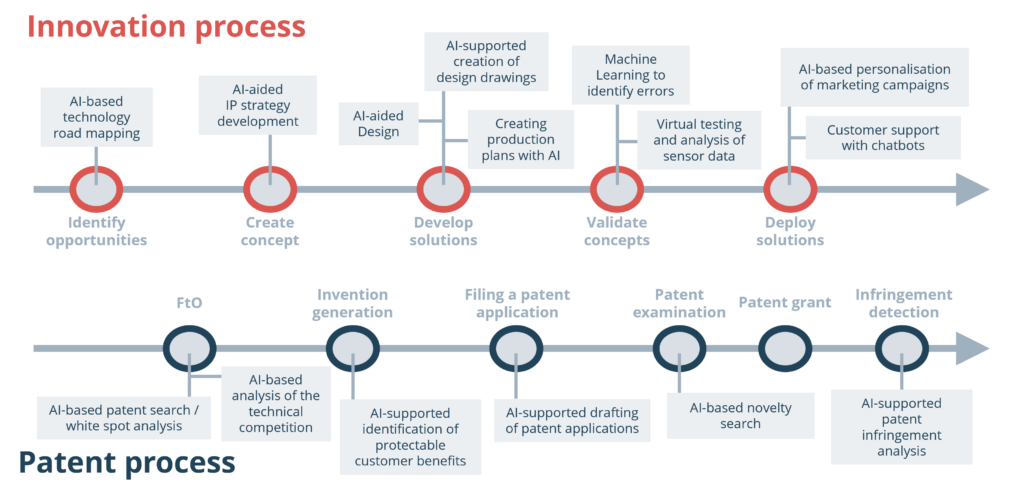Efficiency gains in the generation of IP portfolios with AI
Current reports comparing the patent activities between different regions on an international level showed, that there are significant regional variations on the size and quality of the generated patent portfolios. The leading science and tech clusters, comprising both leading technology companies and university ecosystems are now shifting more in the Asia Pacific region and the US west and east coasts, while Europe is slowly falling behind. Partially, those trends may be explained by relatively smaller budgets for research and development in Europe. But, another explanation is the slower adaption of digital tools, especially AI tools, which can improve the efficiency and effectiveness of all processes in a company including innovation and patent related processes. In a presentation at this year’s spring CTO-Forum conducted on 18th of April, Prof. Wurzer gave an overview on the newest trends how successful companies incorporate AI not only in the innovation process, but also how AI can be utilized by European SMEs to make the tried IP processes more efficient than ever and catch up to the top science, tech and IP clusters worldwide.

According to a current Forbes study 97% of businesses are expecting positive effects of AI on their business success, but not all are utilizing it to the full extent, yet. The biggest application areas are customer service or relationship management, where chatbots are already a very common sight. Additionally to that, cybersecurity is an area, where more than half of all businesses are trusting AI more than classical tools. A big positive effect expected from the use of AI is the increase of productivity of the employees and saving costs this way. But also an increase in the quality of services by process optimization and automation was given as a reason for the use of AI by more than half of the respondents. The use of AI in innovation processes is still a bit smaller with 38% of companies using it for idea generation and 31% of companies using it for the writing of code.
In the innovation process AI can be used in many phases to improve the effectiveness of the creation of new products and solutions. Companies in all industrial areas are at least experimenting with it and some have already mastered the use of AI, especially in Asia. Examples can be the use of AI in road mapping to generate a better overview on the competition and future trends or the automated creation of SWOT analyses. Also further down the innovation process AI can be very useful, e.g. in the validation phase, when machine learning can be used to identify errors in prototypes. And finally, after product launch AI can be used for personalization and individualization of offers and in customer support with the use of Chatbots. All those applications became in the last years feasible and successful companies are using at least some of them as standard tools.
When it comes to IP and the main IP processes in a company, the utilization of IP tools is very high in companies, which are putting a big emphasis on increasing the efficiency of their IP processes. Those efficiency gains are big enough to set them apart from the competition and allow them to generate superior patent portfolio, not only in size, but also in quality. One key application area here is the use of AI tools for conducting white spot analyses to find the best spots in the innovation landscape, where patentable solutions can be generated. Finding those spots early on is crucial for the innovation success, since at that time the innovation costs are still relatively small and a thorough analysis can give insights into the areas, where the most valuable patents may be generated. Nevertheless, also in later stages of the innovation process AI tools can increase the efficiency of IP processes, e.g. by the use of AI in patent drafting or for a patent infringement analysis.




